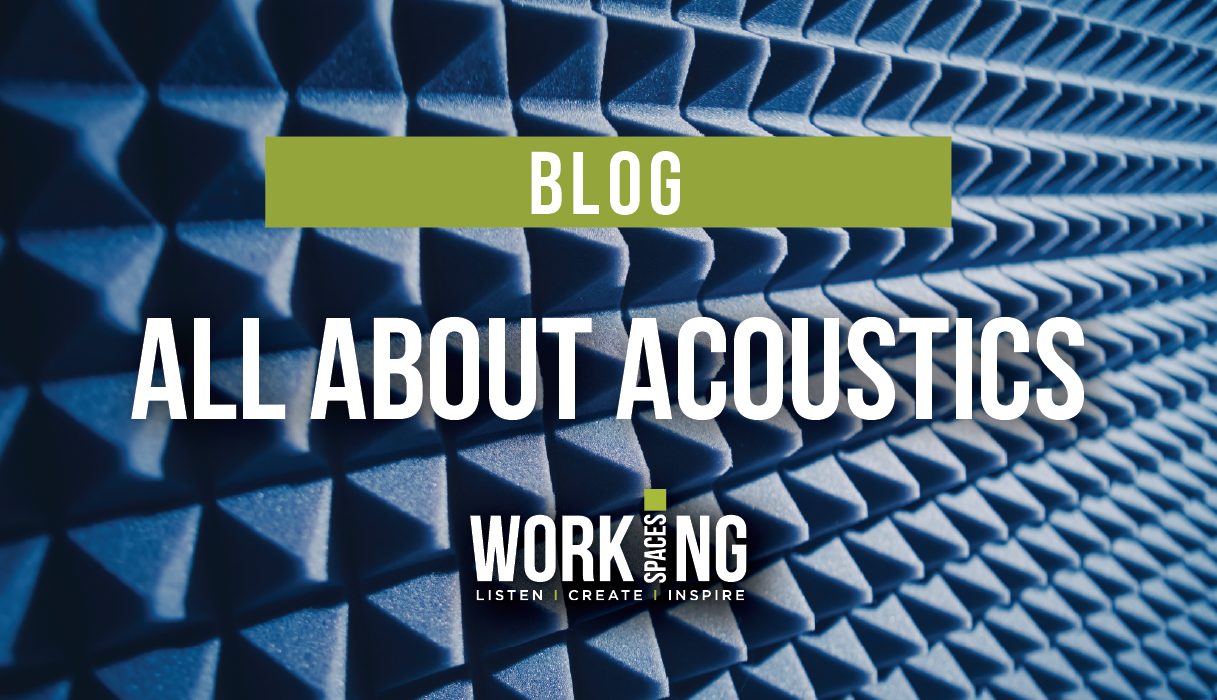All About Acoustics

Imagine stepping through the front doors of your completed office remodel, or finally visiting your organization’s new build project for the first time. Beautiful furnishings are tastefully arranged, original artwork is installed, and ambient lighting is inspiring and on point. Now, add to this experience a layer of sensory input that never even occurred to you—overwhelming and grating noise. Modern workplaces are envisioned with more collaborative spaces than ever before, but without deliberate workplace environment design, elements like sound can demolish even the best laid plans. When it comes to commercial space planning, what are office acoustics, and why do they matter?
What are Acoustics
Simply put, office acoustics consider the impact of noise levels in the workplace. Common office sounds, like that from phones, printers, fans, and conversations, tend to build up in an enclosed space, and increased noise isn’t just an auditory irritation, it affects employees psychologically, behaviorally, and cognitively, often increasing workplace dissatisfaction and decreasing productivity. Comprehensive interior office design needs to compensate for the open spaces common in modern, open-concept floor plans to manage sound quality and its effects.
What Elements of Design Contribute to Sound Quality?
Open, cavernous spaces like wide-open floor plans and buildings like factories, industrial spaces, and those with high ceilings tend to bounce sound around, amplifying noises and creating acoustic distraction. Likewise, hard surfaces like concrete, smooth wall finishes, and even solid furnishings can allow sound waves to travel—an average conversation can be heard by up to as much as 45 feet away from its source. The key to managing sound quality through acoustics is sound absorption, and there are a number of solutions that are easy to incorporate into an initial design, or to improve current conditions.
Available Design Options for Optimal Acoustics
There are a variety of acoustic office solutions that are effective and aesthetic, ranging from soundproofing finishes to modular systems that combine structural flexibility with necessary privacy:
- Complete silence can be just as grating as excessive noise, so technological solutions like sound masking use acoustic technology to add neutral, inaudible background noise to even out sound in a space, and to provide workers with minimum ambient sound levels for an increased sense of privacy.
- Acoustic tiles, dimensional cladding, sound screens, and fabric paneling can provide a sound-buffering solution that adds to color and integrates with design, while muting ambient noise in a space.
- Baffles and suspended acoustic “clouds” enhance aesthetics and can absorb sound in high-traffic areas like breakrooms, collaborative spaces, and waiting rooms.
- Furnishings like chairs, desks, bookshelves and carts can be created or modified with acoustic-buffering materials.
- Moveable wall systems like maars living walls and muraflex offer creative, corporate partition solutions like sound-proof rooms or pods for conferencing and privacy that can be modified as corporate needs change.
Sound Design Advice from Working Spaces
Working Spaces’ professional, comprehensive design teams will consider every element and aspect of your project, including sensory experiences like light and sound that will surround and support your staff and customers. Impactful office design and consulting should be entrusted with a group that has an eye for detail and a passion for perfection; let Working Spaces refine your ideas with sound design advice and visionary concepts. Call us to get started today!
